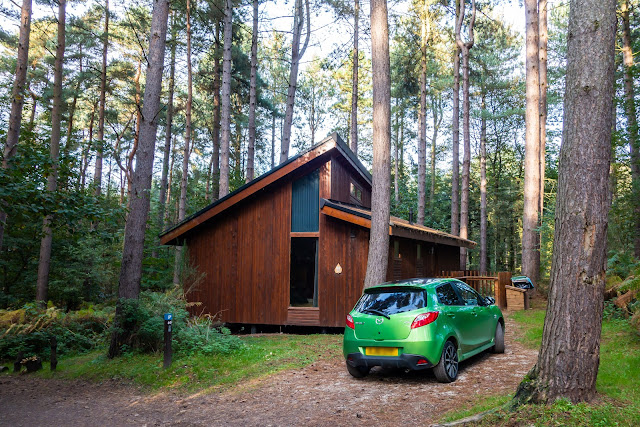It is only in recent times that I came across an article about a nearby Church of `King Charles the Martyr`. I must confess that this was quite a surprise as I had never heard of one before, and this one was reasonable close to where we live. Having done some research, I paid a visit to get some photos of course, but also to see this quaint 18c Parish Church, having never heard of the village of Shelland where this church is situated. But first some background information surrounding the unusual name.
Charles I, head of the House of Stuart, was King of England, Scotland, and Ireland from 27 March 1625 until his death on 30 January 1649. He believed in a sacramental version of the Church of England, called High Anglicanism, with a theology based upon Arminianism, a belief shared by his main political advisor, Archbishop William Laud. Laud was appointed by Charles as the Archbishop of Canterbury in 1633 and started a series of reforms in the Church to make it more ceremonial. This was actively hostile to the Reformist tendencies of many of his English and Scottish subjects. He rejected the Calvinism of the Presbyterians, insisted on an episcopal (hierarchical) form of church government as opposed to presbyterian or congregational forms, and required that the Church of England's liturgy be celebrated with all of the ceremony and vestments called for by the 1604 Book of Common Prayer. Many of his subjects thought these policies brought the Church of England too close to Roman Catholicism. The Parliament of England objected both to Charles's religious policies and to his Personal Rule from 1629 to 1640, during which he never summoned Parliament. These disputes led to the English Civil Wars.

So to the little church in Shelland, Suffolk. The following comes from that excellent website `www.suffolkchurches.co.uk and encapsulates the church beautifully.
`This is a most unusual church, in several ways the most unusual in all of Suffolk. For a start, there is that dedication. King Charles I, as any schoolboy will tell you, was the monarch beheaded by the State in 1649. After the Restoration of the Monarchy in 1660, his memory, especially among Anglicans, was imbued with the status of a Martyr, and, although those deeply protestant times precluded this being sanctified or otherwise formalised in any way, several churches were erected in his name. Five in all England survive, and this is one of them.
The church is unusual in another way, for it is what is known as a donative, a church building erected by a landowner, under his patronage, and with the living in his gift. As such, it is on private land, so a semi-detached Anglican church, if you like. A third unusual thing is simply that 18th century churches are few and far between in East Anglia - there are less than a handful. But the most delightful curiosity is something inside, as we will see.
The church was erected in 1767, on the site of a predecessor, from which the font survives. Otherwise, this is a largely typical prayerbook interior, with chancel gates and a triple-decker pulpit rising above box pews. Mortlock argues that a combination of the church's newness and remoteness saved it from the Victorian restorers, although of course neither of these dissuaded them elsewhere. But it may be simply that it was actually approved of by them, since its beautiful interior decoration does not wholly conform to the pattern of the more spartan prayer book churches which the sacramentally-minded Victorians were keen to do away with.
The Victorians are certainly responsible for the east window, but the two glories of the church are actually from earlier in the 19th century. These are the 1820 barrel organ, which plays 36 different tunes, and is the only one left in Suffolk, and the gorgeous gothic interior decoration, the walls pastel shades, the roof beams salmon pink, and the chancel roof blue and stars. It is all delightful.`
I couldn't have put it better myself!
The village of Shelland has its own village sign, as villages usually do of course.
The top of the notice board proclaiming its patronage.
The pulpit has unique features in that it is a triple-decker, consisting of a pulpit, reading desk and clerk's pew. The congregation's seating is in plain box pews, which date back to the 18th century.
Facing East and showing the beautiful box pews.
Then facing west toward the font and unique Barrel Organ.
The Bryceson Barrel Organ at the west end of the church has three cylinders.
It plays 36 different tunes, and was until the 1970s the only surviving instrument to have been regularly played every week in England. Built by Bryceson Bros., ca. 1810. There are three barrels, each of twelve tunes. Overhauled 1956 by Noel Mander. There are 6 stops of 31 notes. Unusually it has a tierce. What is one of those you say? Well, an organ stop sounding two octaves and a major third above the pitch of the diapason. So there you have it - clear as mud to a non-musician. It is believed that the parishioners have ordered a fourth barrel, with more up-to-date dunes and harmonies.
A really interesting place to visit and fascinating to learn of the history surrounding these small place tucked away in the English countryside.
So, back to the name of this small church - Charles is regarded by many members of the Church of England as a martyr because, it is said, he was offered his life if he would abandon the historic episcopacy in the Church of England. It is said he refused, however, believing that the Church of England was truly "Catholic" and should maintain the Catholic episcopate. His designation in the Church of England's calendar is "Charles, King and Martyr, 1649". Mandell Creighton, Bishop of London, wrote "Had Charles been willing to abandon the Church and give up episcopacy, he might have saved his throne and his life. But on this point Charles stood firm: for this he died, and by dying saved it for the future." In fact, Both high church Anglicans and royalists fashioned an image of martyrdom, and after the Restoration of the monarchy the Church of England was added to the Church of England liturgical calendar, in the Convocations of Canterbury and York of 1660.





























































